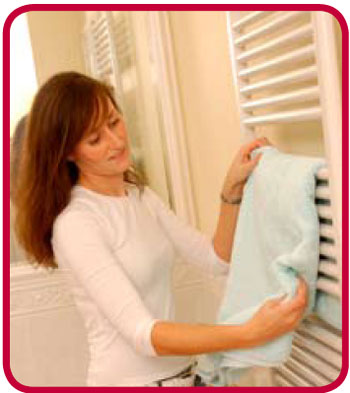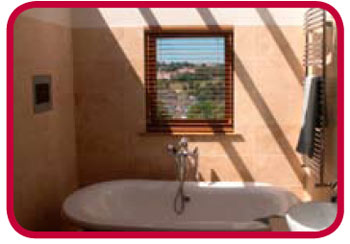Electrical Safety in the Showers
 The electric showers can provide instantaneous showering day and night for the whole family. They draw water directly from a cold water supply and heat it as it is used, so you don’t need to have a stored hot water supply. Because they are easy to install virtually every home can have one. The electric showers require their own electrical circuit, which in general will have the highest electrical demand out of your household appliances. They will need to be connected to the fuse box and protected by an RCD. The cost of fitting an electric shower will depend on whether the fuse box requires updating to comply with current safety standards. Building regulations require an adequate means of ventilation. An extractor fan is essential and will help cut down steam in the bathroom.
The electric showers can provide instantaneous showering day and night for the whole family. They draw water directly from a cold water supply and heat it as it is used, so you don’t need to have a stored hot water supply. Because they are easy to install virtually every home can have one. The electric showers require their own electrical circuit, which in general will have the highest electrical demand out of your household appliances. They will need to be connected to the fuse box and protected by an RCD. The cost of fitting an electric shower will depend on whether the fuse box requires updating to comply with current safety standards. Building regulations require an adequate means of ventilation. An extractor fan is essential and will help cut down steam in the bathroom.
Bathroom Heating Safety - Keeping warm
 The underfloor heating will help you stay warm when you step out of the shower on a chilly morning. It requires sub-floors to be laid, made up of 20mm of chipboard or plywood to provide an even level and insulation, and then the heating is laid with a screed over the top. If you’re not having floor tiles and choose lino or carpet instead you will need thicker screed before laying the final floor finish, this will allow for the build up and even spread of heat. A wall-mounted thermostat will need to be positioned where water can’t splash and will generally be linked to a heat-sensing probe situated within the floor. It’s best to choose a thermostat with a timer, so you can set when the heating comes on.
The underfloor heating will help you stay warm when you step out of the shower on a chilly morning. It requires sub-floors to be laid, made up of 20mm of chipboard or plywood to provide an even level and insulation, and then the heating is laid with a screed over the top. If you’re not having floor tiles and choose lino or carpet instead you will need thicker screed before laying the final floor finish, this will allow for the build up and even spread of heat. A wall-mounted thermostat will need to be positioned where water can’t splash and will generally be linked to a heat-sensing probe situated within the floor. It’s best to choose a thermostat with a timer, so you can set when the heating comes on.This type of system requires RCD protection. All electric heaters and water heaters in a bathroom must be fixed and permanently wired into the wall. Hot water central heating or underfloor heating is the safest way of keeping a bathroom warm, but if you do have an electric room heater it must be out of the reach of someone in the bath or shower – fixed at a greater distance than 0.6m. Also, the electric heaters should be controlled by a pull-cord inside the bathroom or by a switch located outside.
Bathroom Luxuries Safety
If you have extra budget and want to turn your bathroom into your personal spa or television zone, there’s always a way, but just make sure that all electrics are fitted safely.Splashing out on a whirlpool tub - Do you dream of a whirlpool tub? Increasing numbers of homeowners are turning luxury into a reality by installing spa baths. Pumps are fitted underneath the bath and an isolator switch must be located outside the bathroom to turn off the mains power and be RCD protected.
 Bath time television? Having a waterproof TV in the bathroom can help you relax whilst watching your favourite programme or movie. You can even install TVs that double up as mirrors when switched off. By law all TVs have to be fitted into a wall cavity and the area around the screen siliconed to prevent water getting in. You’ll need a depth of 75mm to 85mm so that the screen sits flush with the wall. To prevent the screen steaming up the TV glass is heated. You’ll also need speakers, which like the TV must be hardwired into the wall or ceiling.
Bath time television? Having a waterproof TV in the bathroom can help you relax whilst watching your favourite programme or movie. You can even install TVs that double up as mirrors when switched off. By law all TVs have to be fitted into a wall cavity and the area around the screen siliconed to prevent water getting in. You’ll need a depth of 75mm to 85mm so that the screen sits flush with the wall. To prevent the screen steaming up the TV glass is heated. You’ll also need speakers, which like the TV must be hardwired into the wall or ceiling.
This article is the second part of the "Turn your bathroom into a safe sanctuary - bathroom electrical datasheet from NICEIC" - electrical safety tips from NICEIC(read the PDF online or read other safety tips/fact datasheets from NICEIC).



